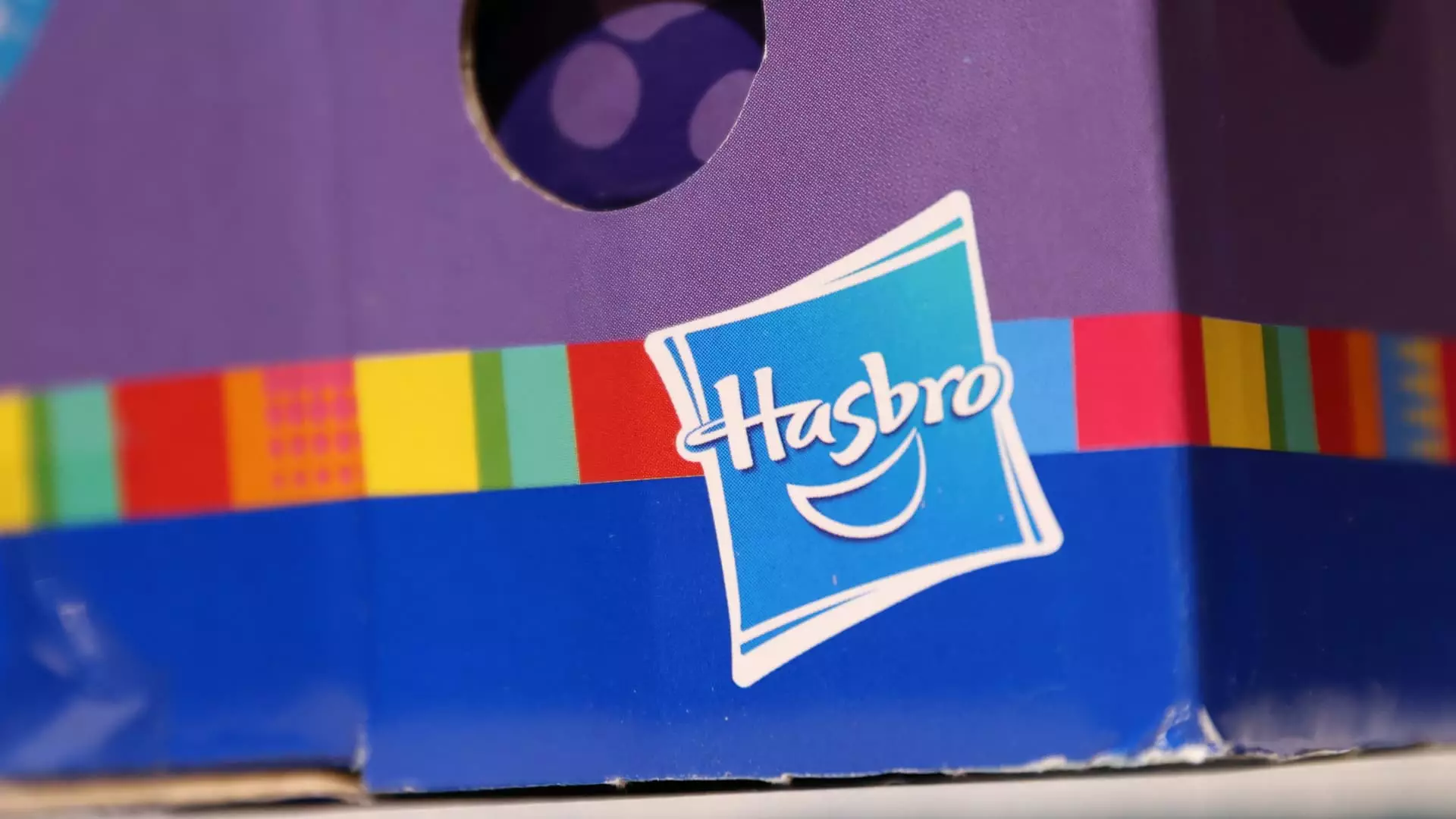Toy industry titan Hasbro has adopted a cautiously optimistic outlook in the face of escalating tariffs that have started to reshape the landscape of manufacturing and pricing. During their fourth-quarter earnings call, Chief Financial Officer Gina Goetter highlighted the company’s proactive approach to adapting to new economic conditions, especially concerning anticipated changes in tariffs affecting goods from China, Mexico, and Canada. By planning to transfer a significant portion of its manufacturing away from China—targeting a reduction from 50% to below 40%—Hasbro is positioning itself to mitigate potential impacts of these tariffs while maintaining operational effectiveness.
Goetter’s remarks, indicating a forecast for adjusted EBITDA to rise from $1.06 billion in 2024 to between $1.1 billion and $1.15 billion in 2025, reflect strategic maneuvering amidst challenging circumstances. This foresight, combined with efforts to optimize their supply chain and consider price adjustments, shows that Hasbro is not merely reacting but is actively shaping its future in a way that could shield it from adverse impacts.
The move to adapt is not unique to Hasbro. Competitor Mattel has also hinted at price increases on iconic lines like Barbie and Hot Wheels in response to tariffs. This broader industry trend highlights a potential ripple effect where increased costs could eventually lead to higher retail prices, affecting consumer behavior. Such strategic decisions underline the vulnerability of the toy industry, illustrating how fiscal policies can profoundly alter company trajectories.
As Hasbro looks to recalibrate its sourcing strategies, it’s evident that the company’s reliance on China is a critical component of its operations. Goetter’s designation of the situation as “really a China story” emphasizes the need for Hasbro to diversify its manufacturing base to build resilience against external economic shocks.
At the recent earnings call, CEO Chris Cocks conveyed a balanced view about the industry’s performance moving into the next fiscal year. Predicting “flattish” performance across the broader toy sector, he pointed to specific segments such as trading cards and building blocks as areas of growth. The capability of Hasbro’s licensing endeavors, which offer higher margins, further distinguishes it from competitors whose products may be more susceptible to tariffs.
The ongoing collaboration recently announced between Hasbro and Mattel—creating a Play-Doh version of Barbie—shows an innovative approach to product development while leveraging brand partnerships. Cocks described this venture as an opportunity for children to indulge their creativity, framing the collaboration not as a challenge but as an avenue for expanding their combined market share.
As Hasbro evaluates its financial performance, the comparison of fourth-quarter earnings reveals a complicated backdrop. The company’s reported earnings of 46 cents per share surpassed Wall Street expectations but also marked a year-over-year revenue drop of 15%. The decline was partially attributed to the company’s strategic divestiture from its eOne film and television sector, which they sold to Lionsgate in late 2023. Acknowledging a 7% drop in yearly revenue when excluding eOne, Hasbro’s leadership emphasizes the need for ongoing adjustments in response to market dynamics.
On a brighter note, Hasbro’s digital gaming revenue surged, showcasing a 35% increase compared to the previous year. This growth points to a shifting trend within entertainment consumption, where digital platforms are becoming increasingly vital for product engagement. The success of the mobile game Monopoly Go! is indicative of how Hasbro is capturing evolving consumer interests, promising a bright spot in an otherwise challenging financial landscape.
In summation, Hasbro’s strategic shift in manufacturing settings and its focus on innovation illustrate the dynamic nature of the toy industry amid tariff-related uncertainties. While facing a complex milieu of declining revenues and competitive pressures, the company appears poised to adjust and innovate. By diversifying its supply chain, capitalizing on digital trends, and leveraging partnerships for product development, Hasbro is not simply surviving the pressures of tariffs; it is laying the groundwork for future growth in an ever-evolving marketplace. As market dynamics continue to unfold, eyes will be on Hasbro to see if its strategies can translate into long-term resilience and profitability.

